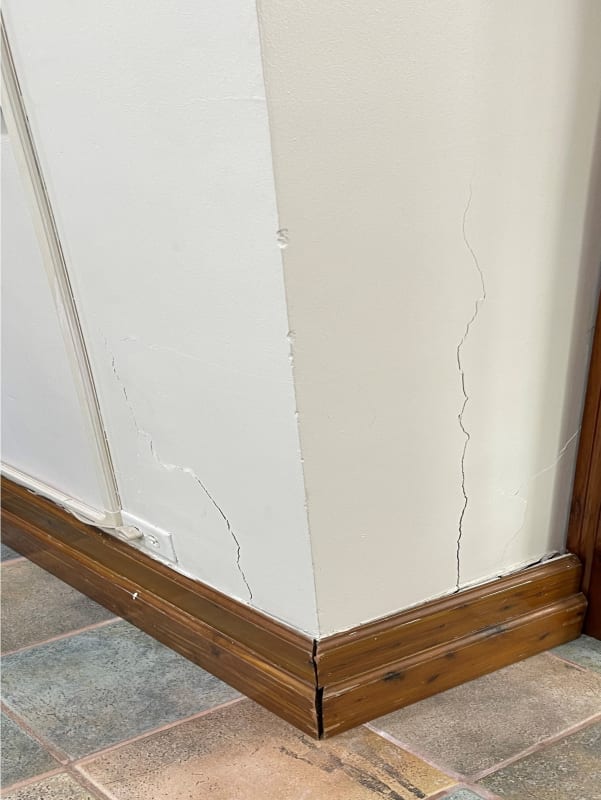Hi there,
I was asked to look at a few cracks in a building that apparently got worse after heavy winds recently.
I'll most likely need to give comment on the most likely cause of the crack and potentially a recommendation for a fix.
My thoughts are outlined below but I would appreciate the opinions/thoughts from you all.

For the image above, the cracks are mainly vertical and appear to be between 2mm and 5mm in width( I'll confirm this from a site visit) . Based on the age of the building, I'm assuming that the walls are built with limestone (common in my area for old properties)or hollow CMU block.
I believe the main cause for a vertical crack like this would be settlement of the foundation. Or it may just be a plaster crack. I'm leaning toward having them hack the plaster off the wall in this area, which would allow me to determine if the crack has gone through to the main structural wall. Is this a reasonable request that I can ask from the client?
If the cause is due to settlement and there are no signs of damage to the surrounding structural elements, I'd be inclined to just have the client hack and plaster the cracks for aesthetic purposes?
Any advice would be appreciated.
I was asked to look at a few cracks in a building that apparently got worse after heavy winds recently.
I'll most likely need to give comment on the most likely cause of the crack and potentially a recommendation for a fix.
My thoughts are outlined below but I would appreciate the opinions/thoughts from you all.

For the image above, the cracks are mainly vertical and appear to be between 2mm and 5mm in width( I'll confirm this from a site visit) . Based on the age of the building, I'm assuming that the walls are built with limestone (common in my area for old properties)or hollow CMU block.
I believe the main cause for a vertical crack like this would be settlement of the foundation. Or it may just be a plaster crack. I'm leaning toward having them hack the plaster off the wall in this area, which would allow me to determine if the crack has gone through to the main structural wall. Is this a reasonable request that I can ask from the client?
If the cause is due to settlement and there are no signs of damage to the surrounding structural elements, I'd be inclined to just have the client hack and plaster the cracks for aesthetic purposes?
Any advice would be appreciated.
